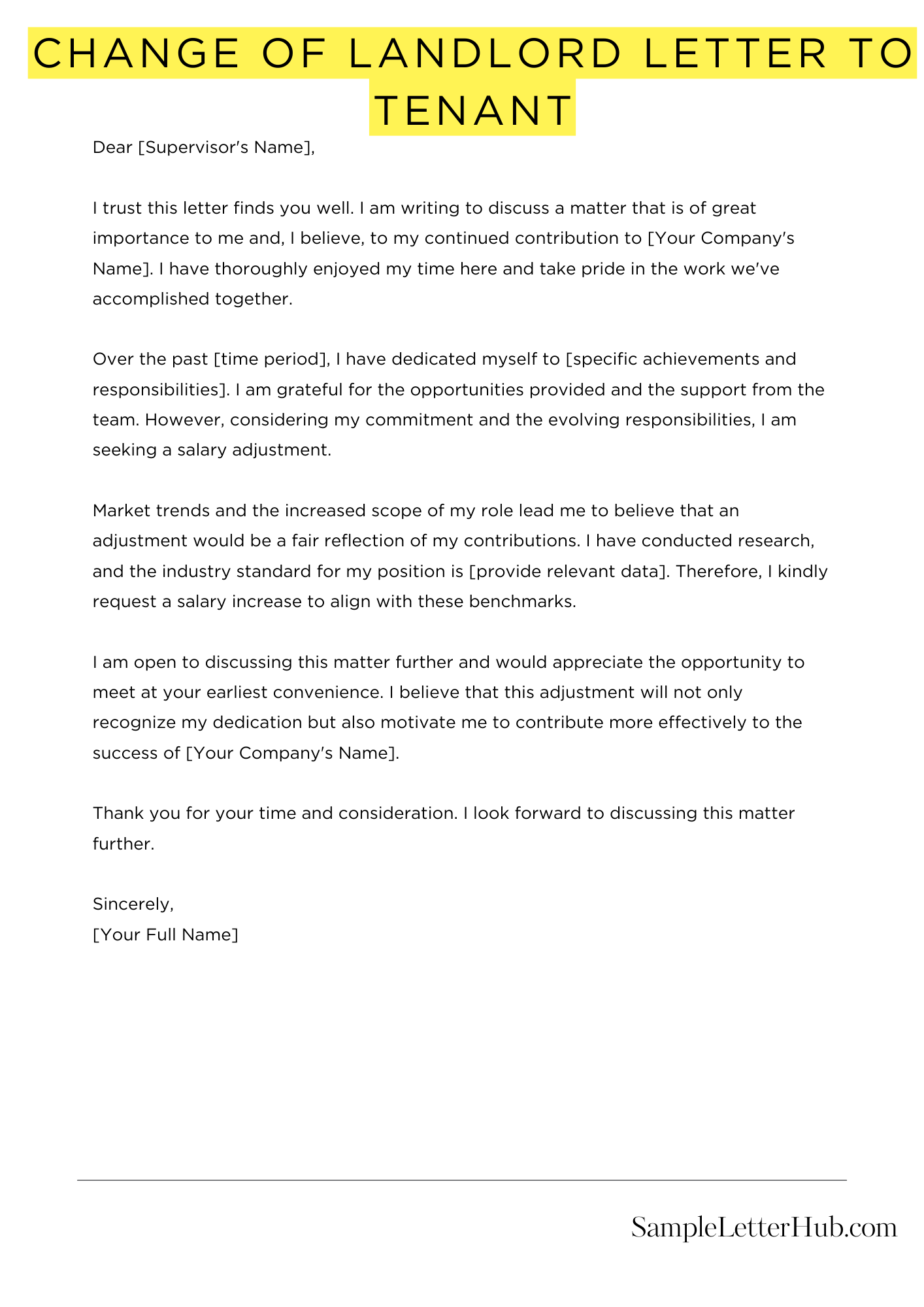A Change of Landlord Letter to Tenant is a formal notice sent by the new landlord to the tenant informing them of the change in ownership and providing important information. It establishes the new landlord’s contact details, rent payment arrangements, and any other relevant details.
In this article, we aim to provide you with a comprehensive collection of templates, examples, and samples of Change of Landlord Letters to Tenant. These templates are designed to make it easy for you to draft a professional and informative letter that effectively communicates the change in ownership to your tenants.
## Change of Landlord Letter to Tenant
Dear [Tenant’s Name],
I am writing to inform you of a change in ownership of the property you currently rent at [property address]. Effective [date], [new landlord’s name] will become the new landlord.
[New landlord’s name] has purchased the property from [previous landlord’s name] and will be responsible for all landlord duties, including rent collection, maintenance, and repairs.
Your current lease agreement will remain in effect, and all terms and conditions will continue to apply. The rent amount, due date, and payment method will remain the same.
[New landlord’s name] will be available to answer any questions or concerns you may have. You can reach them at [new landlord’s phone number] or [new landlord’s email address].
We appreciate your understanding and cooperation during this transition. We are committed to providing you with a comfortable and well-maintained home.
Sincerely,
[Your Name]

How to Write a Change of Landlord Letter to Tenant
When a landlord changes, it is important to notify the tenants in writing. This letter should include the following information:
1. The Date
The date the letter is written.
2. The Landlord’s Name and Contact Information
The name and contact information of the new landlord.
3. The Tenant’s Name and Address
The name and address of the tenant.
4. The Property Address
The address of the property.
5. The Effective Date of the Change
The date the change of landlord will take effect.
6. The Rent Amount and Due Date
The rent amount and due date.
7. The Contact Information for the New Landlord
The contact information for the new landlord, including their phone number, email address, and mailing address.
The letter should be clear and concise, and it should be sent to the tenant via certified mail, return receipt requested.
FAQs about Change Of Landlord Letter To Tenant
What information should be included in a change of landlord letter?
The letter should include the following information:
- The name and address of the old landlord
- The name and address of the new landlord
- The date of the change of ownership
- The amount of rent that will be due to the new landlord
- The date that rent is due
- Any other relevant information, such as contact information for the new landlord
What are the legal requirements for a change of landlord letter?
The legal requirements for a change of landlord letter vary from state to state. However, most states require that the letter be in writing and that it be signed by both the old and new landlords. The letter should also be sent to the tenant via certified mail, return receipt requested.
What should a tenant do if they receive a change of landlord letter?
A tenant should carefully review the letter and make sure that it contains all of the required information. The tenant should also contact the new landlord to confirm the terms of the lease and to make arrangements for paying rent.
What happens if a tenant does not receive a change of landlord letter?
If a tenant does not receive a change of landlord letter, they should contact their old landlord to find out who the new landlord is. The tenant should then contact the new landlord to confirm the terms of the lease and to make arrangements for paying rent.
What are the consequences of not following the legal requirements for a change of landlord letter?
If the legal requirements for a change of landlord letter are not followed, the tenant may be able to challenge the validity of the lease. This could lead to the tenant being evicted from the property.

